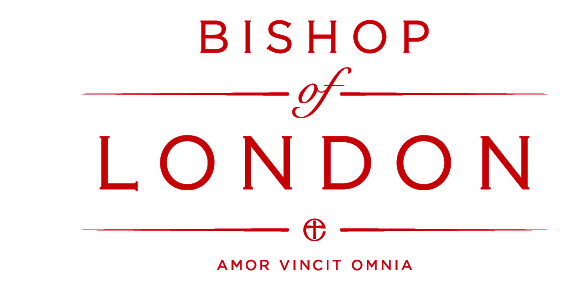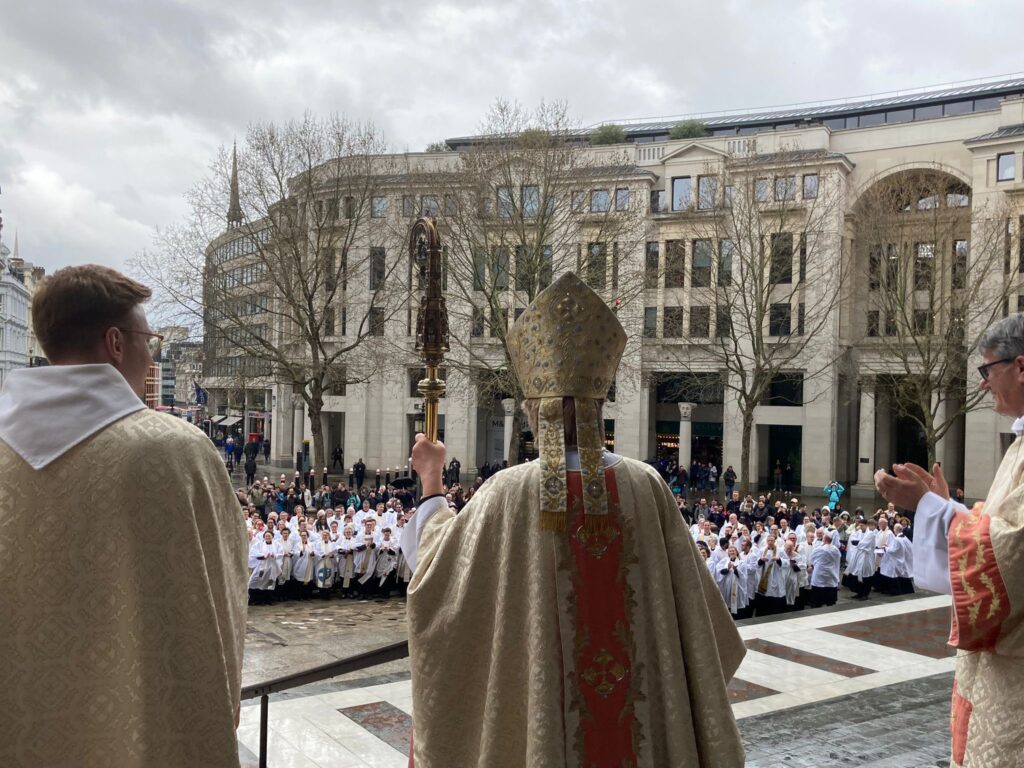
Bishop Sarah’s Easter Engagements
The Bishop of London marked Holy Week with a number of services across the capital.
On Sunday 2nd April in Harlesden, she led the Palm Sunday parade down the high street with fellow worshippers from All Souls.
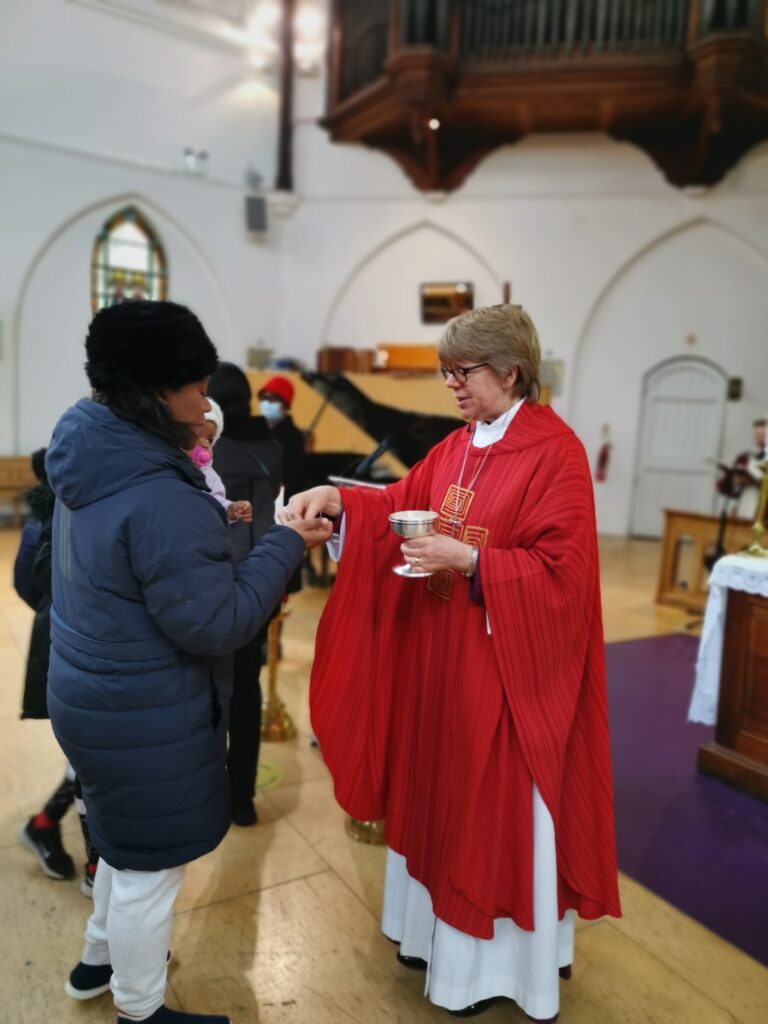
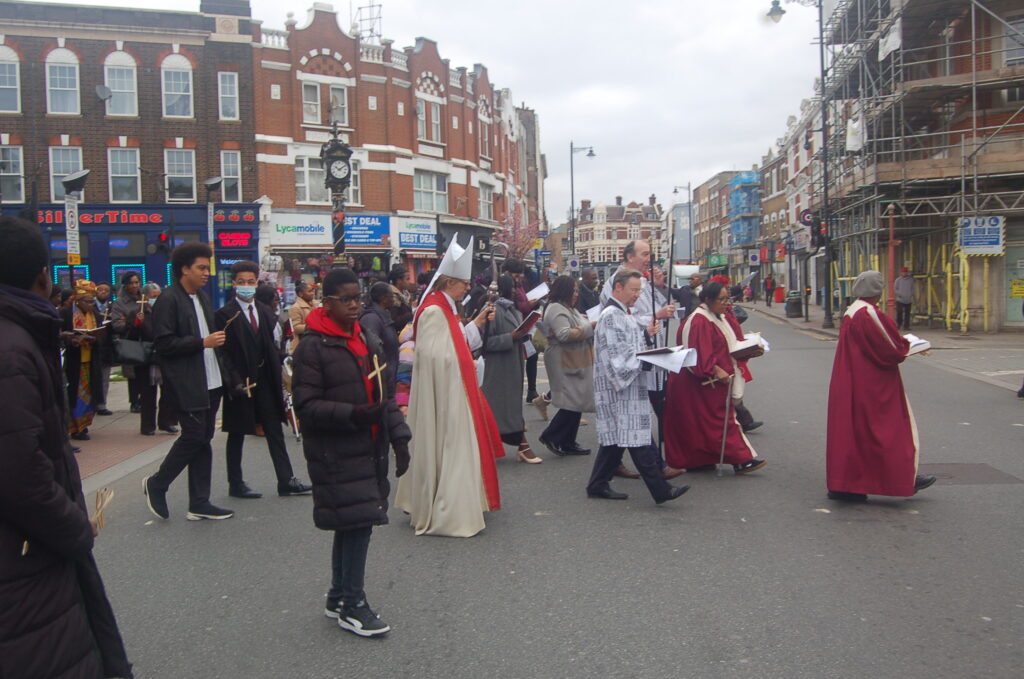
On Tuesday 4th, Bishop Sarah attended Fulham Chrism Mass at St Andrew’s Holborn alongside the Bishop of Fulham, Jonathan Baker.
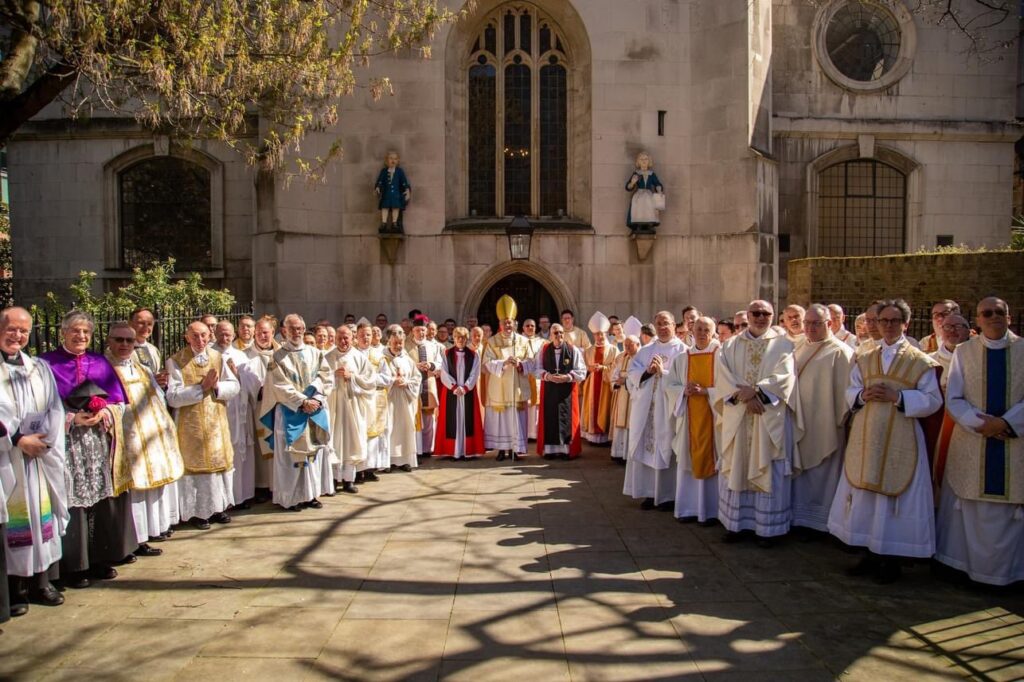
Bishop Sarah had the privilege on Maundy Thursday of presiding over Chrism Mass at St Paul’s Cathedral. During Chrism Mass, the Bishop blesses the sacred oils for the year ahead, and the Clergy and Ministers of the Diocese of London renew their ordination vows.

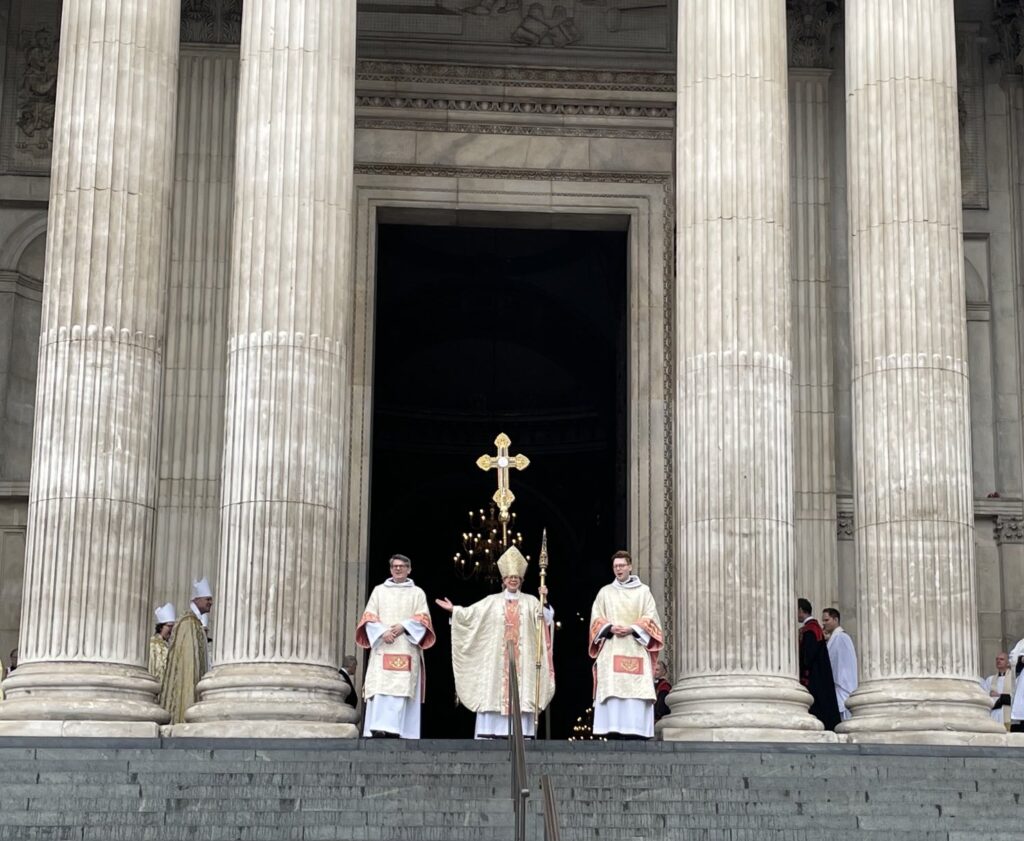
She then participated in a ceremonial foot washing ceremony at the Tower of London’s Chapel of St John the Evangelist.

On Friday, she read the closing prayer at the annual Wintershall Passion in Trafalgar Square, re-enacting the Passion of Jesus in front of thousands of attendees.
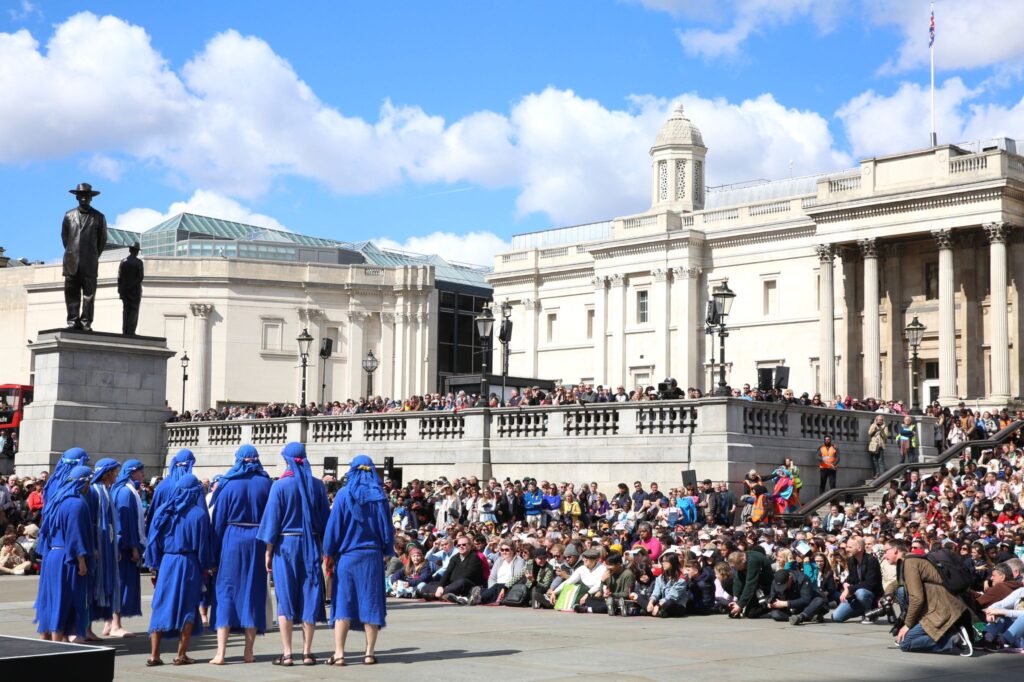
On Saturday, Bishop Sarah baptised 13 and confirmed 100 people at St Paul’s as part of the Easter Vigil.
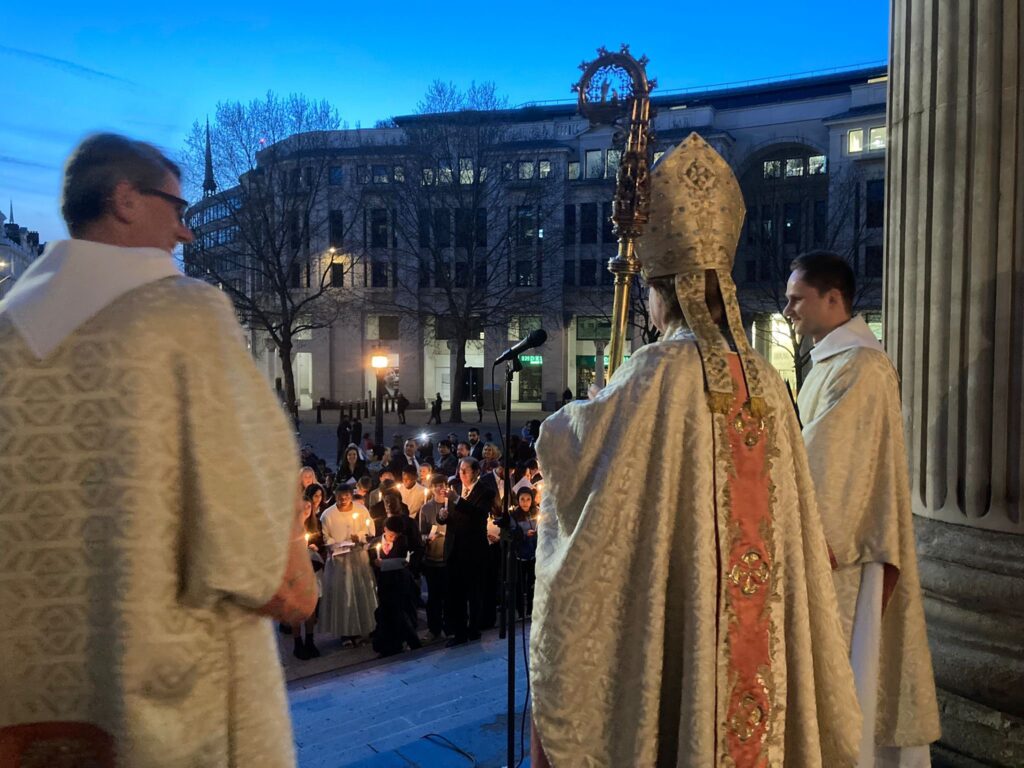
Holy Week culminated in Easter Sunday celebrations, with the Bishop presiding over the Dawn Eucharist at St Paul’s Cathedral. Bishop Sarah’s Easter Sermon can be read below.
Easter Evensong Sermon Preached by the Rt Revd Sarah Mullally St Paul’s Cathedral Easter Vigil 9th April 2023
Song of Solomon 3. 2-5; 8. 6-7 and Revelation 1. 12-18
‘Then I turned to see whose voice it was that spoke to me.’
I sat a few weeks ago working late at my desk. My office faces onto a yard which is surrounded by four high walls of office blocks. Sitting there after dark I heard voices. There is no way anyone can enter the yard, so I went out intrigued and slightly concerned about where the voices originated from – we are not used to hearing unexpected voices. ‘Then I turned to see whose voice it was that spoke to me’. And there, high above me, there were two men abseiling down the courtyard wall, undertaking survey work. And yes, when I questioned how they could see in the dark, they shone a bright light in my face.
We are all startled when we hear unexpected voices.
But the voice of God is often unexpected. God speaking to Samuel came in the night and he was not recognised by him; Elijah was spoken to by God not in the wind or the earthquake but in the small voice of calm in silence. And after the resurrection Mary only recognises Jesus when he speaks to her and calls her name, so that she turns towards him. Jesus on the beach, in one of the most powerful of the resurrection stories, speaks to the disciples and tells them not to be afraid, then goes on to speak to Peter about caring for his sheep. Sometimes when the voice we hear is unexpected it brings a challenge. At other times it brings deep reassurance.
Here in John’s Revelation, John turns to see the voice that is speaking to him, and he is told ‘Do not be afraid; I am the first and the last, and the living one. I was dead, and see, I am alive for ever and ever; and I have the keys of Death and of Hades.’
That is the message of Easter – we do not need to be afraid, for Jesus is alive and death is no more and no longer do we need to fear eternal separation from God.
‘Do not be afraid’ is one of the most frequent commands in the bible. In fact, according to that great theological resource Google there are 366 “fear not” verses in the Bible – one for each day of the year, including one for a leap year.
To hear the words of God ‘Do not be afraid’ is not to pretend that fear does not exist. To hear the words of God ‘Do not be afraid’ is to hear what comes next – ‘I am with you’. I am alive. It doesn’t deny fear. It says that God walks with us in that fear and that presence transforms our experience.
‘Do not be afraid, for I am with you’, God says. God never promises us an easy, comfortable or pain-free life in this world. This world is a harsh place to live in and there are many things we may fear. The Christian does not escape disease or accident or pain or loss, and some of us could be experiencing times of trial right now.
The One who has called us by name speaks our name in love as he did to Samuel sleeping, as he did to Mary Magdalen at the garden tomb, as he did to Matthew sitting in his tax booth and to Saul on the road to Damascus and as he did to John in his revelation. He says ‘Come, follow me,’ and the God who has called us is faithful for he is alive and not dead.
God speaks our name in love. The writer of Song of Solomon tells us ‘Many waters cannot quench love, neither can floods drown it’. Our first reading was part of a beautiful meditation on love which Christians hear as a powerful metaphor for the love of Christ and the love of God. ‘Set me as a seal upon your heart, as a seal upon your arm; for love is strong as death, passion fierce as the grave’.
This Eastertide may we hear Jesus’s voice in the clamour. May we listen for him in those who are struggling to meet their fuel costs; those who are relying heavily on food banks; those who find all talk of death and resurrection deeply painful as they struggle with bereavement and loss. And those who live in places of conflict and torture who feel that their hope and longing for a welcome elsewhere is diminishing.
May we – and they – hear the voice which says, ‘Do not be afraid’. Not because there is nothing to fear, but because Christ is with us in and through all of it, including death and what lies beyond.
Jesus’s passion conquers the grave. His love, God’s love, is stronger than death. It is a seal upon our heart and our arm because he marks us with his love, enfolds us in his love, transforms us by his love. We are his beloved, now and always.
The theologian Karl Barth wrote, ‘The God who awaits us in death and as the Lord of death is the gracious God. He is the God who is for us’. He goes on to reassure us that when we hope in God, ‘death is already behind and under us’.
For John – and for Mary at the tomb – as they hear the voice, they turn to see the face of Jesus Christ.
Faces carry immense significance for what it means to be a person. It has been suggested that the face is the essence of the person and the presence of the person.
Roger Scruton in his book “The Face of God” talks about how our face is the part of the body on which our intention is inscribed. It is in our facial expressions that meaning lies.
To turn to see God’s face is to see his glory, to see what he is about, to see his kingdom among us. Like Anna and Simeon who waited and watched and in the busyness of the temple they saw the face of God and glimpsed his glory in the 40 day old Jesus.
It is in response to seeing God’s face that the Seraphs cry, ‘Holy, Holy, Holy is the Lord of hosts’. To see God’s face is to come down the mountain like Moses and reflect that glory in the world. Like Mary, it is to see Jesus’s face and believe, and to go and tell others what we have seen.
So today as we hear God’s voice, do not be afraid. Let us turn to Him, for in Him is blessing and life eternal.
The Lord bless you and keep you; The Lord make his face to shine upon you And be gracious to you; The Lord lift up his countenance upon you And give you peace.
(Number 6: 24-26)
